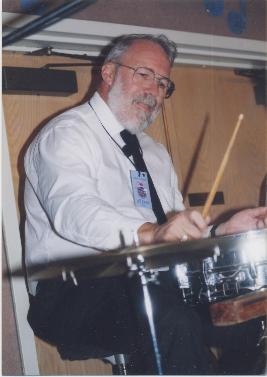For some time now, developments in the world of recording have been leading to
the question: Is the CD’s demise imminent?
In the 1920s shellac 78 rpm records took over from wax cylinders; then came the 12”
vinyl 33⅓ rpm records (and, briefly, also the 10” vinyl 33⅓ and the smaller vinyl 45
rpm [1 track per side] and the EP [2 tracks per side], all of these bowing ultimately to
the 12” LP) to supplant the 78s in the early 1950s; in turn, LPs became obsolete with
the appearance of CDs around the mid 1980s.
In the mix, too, was the wire recorder (late 1940s), for which, however, there were no
pre-recorded commercial recordings, followed by the tape recorder, the latter being
of two types: (1) open reel (a.k.a. reel-to-reel) in the 1950s and (2) cassette in the mid
1960s. Commercial recordings were available for these two media, as well as for 8-
track tape cassettes, the latter aimed at automobile use. The 8-track cassette
appeared on the scene in the late 1950s but was displaced by the tape cassette in cars
by the mid 1970s. It, in turn, was superseded by the CD in the mid 1980s.
Since LPs lack portability, the present resurgence of that format will not be a wide
one, despite some claims to the contrary. Its support will—and probably already
does—come from audiophiles only, I would think. Similarly, tape cassettes will not
resurrect due to the lack of the players available (and cassette tapes themselves) and
to their discontinuance in the automobile. Besides, locating a track on a tape is
arduous and very time-consuming.
Today the CD survives with players in both home and automobile, but it may well
be verging on life support. Many record stores that sold CDs, new and used, have
disappeared of late, including a host of small independent retailers (of a dozen or so
I used to frequent only about three survive) and even some of the big ones, such as
Tower Records, are gone. Many musical groups are not producing CDs for big
labels or small ones but are making and retailing, via the internet, their own
recordings, mp.3 being the preferred medium.
Each recorded track is digitized as an mp.3 file, and one can buy and download
these files—singly or the entire group—from internet websites such as iTunes and
Amazon or from the labels’ sites or from the sites of bands themselves. Then one
can either leave them in folders on the hard drive or, for portability, load them onto
mp.3 players or memory sticks or “burn” them onto recordable CDs. I would guess
the last option will disappear with the discontinuance of recordable CDs, which will
probably occur in the near future. Already automobiles have mp.3 (or iPod or
memory stick) inputs, and undoubtedly the CD player in the car will go the way the
tape player did. The car CD player will quite likely be the canary in the coal mine
as far as the viability of CDs is concerned.
So once again we face a brave new world of recording formats. I do not know what
will succeed the mp.3 file, but something undoubtedly will. Probably there is some
other format already on the drawing board or already further along in development,
assuring the mp.3 file’s eventual obsolescence. As with so much in today’s world of
technology, it is getting ever harder—not to mention expensive—to keep up.
|
|





